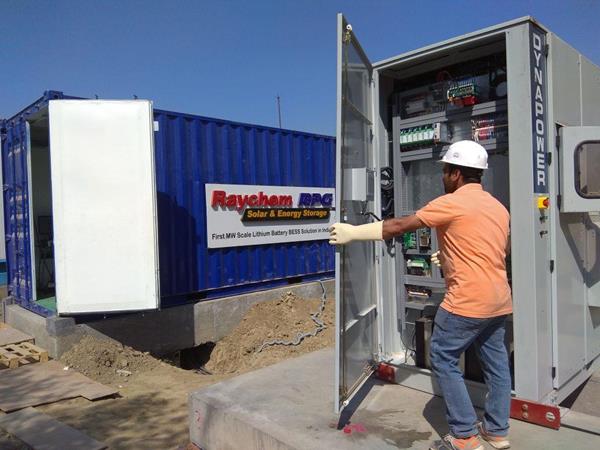The USA’s National Renewable Energy Laboratory (NREL) with support from the U.S. Agency for International Development (USAID) has prepared a report that provides a comprehensive, evidence-based approach to facilitate deployment of distributed solar-plus-storage systems for retail customers in India.
Specifically, the report covers key regulatory considerations to manage the range of challenges and opportunities that increased behind-the-meter energy storage deployment, paired with distributed PV, will bring to the power system.
Throughout the report, relevant cases from US states are provided as examples of how novel regulatory issues are being addressed in practice.
According to the report, declining lithium-ion battery costs present a significant opportunity to enrol customer-sited lithium-ion batteries in India, thereby reducing Discom operating costs and improve power system reliability. Regulations addressing advanced inverter capability requirements, communication protocols, and customer compensation can be designed to seize this opportunity.
The distributed solar-plus-storage systems can be deployed to serve a customer’s own energy demand, and/or for individual customer backup purposes during grid outages. Or, these could also be used to provide grid services to the power system.
State Electricity Regulatory Commissions (SERCs) can encourage the deployment of these systems or to use these systems to achieve specific objectives, especially for more grid-interactive roles, by clearly articulating their objectives and desired use cases for storage systems.
To promote fairness, SERCs can customize rules and requirements based on the characteristics of the DPV-plus-storage system. Creating distinct sets of compensation mechanisms, metering and technical configuration requirements, and interconnection processes—based on system size, the intended use of the system, and other aspects—can help SERCs ensure regulatory requirements are appropriate for various segments of the DPV-plus-storage market in India.
The report discusses a variety of retail tariff options available to regulators, with a focus on how these tariff elements can drive different customer behaviors to the benefit of Discoms. Both time-invariant and time-variant sell rates are discussed.
“Flat volumetric rates provide little opportunity for customers to reduce their bills through storage systems. Alternative retail tariffs designed specifically for DPV-plus-storage customers—featuring structures such as time-variant rates (e.g., Time-of-Day) or demand charges—could incentivize the coupling of storage and solar, as well as help align customer behavior with system needs”—it states.
Customer-sited, customer-financed storage resources in exchange for a modest fixed monthly bill credit may be particularly appealing for cash-constrained Indian Discoms. In the future, behind-the-meter storage systems might be aggregated by third parties to provide valuable services to Discoms and/or the bulk power system.
The report suggests metering and technical configuration requirements for DPV may need to be revisited to incorporate more grid-interactive applications of DPV-plus-storage. Differentiating metering and technical configuration requirements based on customer class, voltage interconnection level, or system size may help minimize undue cost burdens for customers, as well as administrative costs for utilities that must review and approve these systems.
Existing DPV regulations in India can be used as foundation for designing DPV-plus-storage interconnection rules. Given existing distributed solar quality issues in India, procedures to verify battery inverter settings may be of particular interest for SERCs to explore.
This content is protected by copyright and may not be reused. If you want to cooperate with us and would like to reuse some of our content, please contact: editors@pv-magazine.com.









By submitting this form you agree to pv magazine using your data for the purposes of publishing your comment.
Your personal data will only be disclosed or otherwise transmitted to third parties for the purposes of spam filtering or if this is necessary for technical maintenance of the website. Any other transfer to third parties will not take place unless this is justified on the basis of applicable data protection regulations or if pv magazine is legally obliged to do so.
You may revoke this consent at any time with effect for the future, in which case your personal data will be deleted immediately. Otherwise, your data will be deleted if pv magazine has processed your request or the purpose of data storage is fulfilled.
Further information on data privacy can be found in our Data Protection Policy.